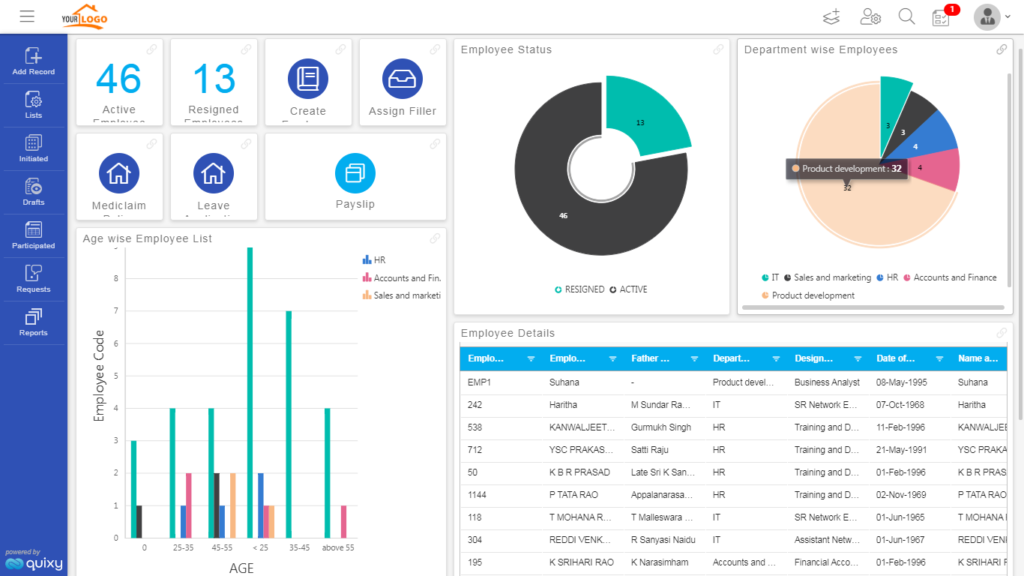No-Code Open System Data Source Creation: Empowering Companies to Develop Faster
No-Code Open System Data Source Creation: Empowering Companies to Develop Faster
Blog Article
A Comprehensive Overview to Executing Scalable Databases Without the Need for Coding Proficiency
In the contemporary landscape of data administration, the capacity to execute scalable databases without coding expertise is coming to be increasingly vital for organizations of all dimensions. What are the critical aspects that can really equip these individuals to take advantage of scalable databases successfully?
Recognizing Scalable Data Sources
In the realm of modern-day data management, scalable databases have actually emerged as an important remedy for companies seeking to handle enhancing volumes of info efficiently. These databases are designed to fit development by enabling the seamless addition of sources, whether with horizontal scaling (adding much more machines) or vertical scaling (upgrading existing makers) This adaptability is necessary in today's fast-paced electronic landscape, where information is generated at an unprecedented price.
Scalable databases typically make use of distributed architectures, which enable information to be spread across numerous nodes. This distribution not only improves efficiency but also provides redundancy, making sure data availability also in the event of equipment failings. Scalability can be a critical factor for various applications, consisting of e-commerce platforms, social media sites networks, and large data analytics, where user demand can fluctuate considerably.
Additionally, scalable data sources usually include robust data uniformity models that balance efficiency and integrity. Organizations has to consider their specific demands, such as read and create speeds, data honesty, and fault resistance when choosing a scalable data source remedy. Eventually, comprehending the underlying concepts of scalable databases is essential for businesses intending to flourish in a significantly data-driven world.
Trick Functions to Search For
When evaluating scalable data sources, a number of vital features are paramount to making sure optimal efficiency and dependability. Firstly, consider the architecture of the database. A distributed style can enhance scalability by allowing data to be kept throughout multiple nodes, helping with smooth data gain access to and handling as demand increases.
One more critical attribute is information partitioning, which allows effective administration of huge datasets by separating them into smaller, extra workable items (no-code). This approach not only boosts efficiency but also simplifies resource appropriation
Additionally, look for robust duplication capacities. This function makes sure data redundancy and high availability, reducing downtime throughout maintenance or unexpected failings.
Efficiency tracking tools are likewise important, as they give real-time insights right into system wellness and operational efficiency, permitting for prompt adjustments to keep optimal efficiency.

User-Friendly Database Tools
Simpleness is an important component in the style of straightforward database devices, as it boosts access for customers with differing degrees of technical knowledge. no-code. These devices prioritize instinctive interfaces, allowing individuals to create, manage, and question data sources without calling for considerable programming expertise
Trick attributes normally include drag-and-drop capability, visual information modeling, and pre-built templates that enhance the setup procedure. Such tools commonly offer guided tutorials or onboarding procedures that assist in individual interaction and reduce the knowing curve. In addition, seamless combination with popular information sources and services guarantees that users can conveniently import and export information, further simplifying procedures.

Additionally, robust assistance and community resources, such as forums and documents, boost the customer experience by offering aid when required. Generally, straightforward data source tools empower companies to harness the power of scalable data sources, making data monitoring accessible to everyone included.
Step-by-Step Application Overview
Just how can organizations efficiently apply scalable databases to fulfill their growing information needs? The procedure starts with determining details data requirements, consisting of the volume, range, and velocity of information that will be processed. Next off, companies ought to assess user-friendly database tools that supply scalability attributes, such as cloud-based solutions or managed data source services.
When click reference the right tool is chosen, the following step includes configuring the data source atmosphere. This includes establishing instances, defining individual permissions, and establishing data frameworks that align with company goals. Organizations must then migrate existing data into the brand-new system, ensuring information honesty and very little interruption to procedures.
Post-migration, carrying out extensive testing is essential; this includes performance testing under different load problems to make certain the system can handle future development - no-code. Furthermore, it is vital to educate staff on the database administration interface to help with seamless use
Ideal Practices for Monitoring
Efficient monitoring of scalable databases needs a calculated method that prioritizes ongoing monitoring and optimization. To accomplish this, organizations should apply durable monitoring devices that give real-time insights into data source performance metrics, such as question action times, source use, and purchase throughput. Regularly analyzing these metrics can help identify bottlenecks and areas for enhancement.

Regular back-ups see this site and disaster recuperation strategies are necessary to guard data honesty and availability. Establishing a routine for testing these back-ups will ensure a dependable recuperation procedure in case of an unforeseen failing.
In addition, performance adjusting need to be a constant process. Readjusting indexing methods, enhancing queries, and scaling resourcesâEUR" whether up and down or horizontallyâEUR" will help preserve optimal efficiency as use needs progress.
Finally, promoting a society of knowledge sharing among team participants will make it possible for continuous discovering and adaptation, making certain that the management of scalable data sources stays efficient and efficient over time.
Final Thought
Finally, the application of scalable databases can be properly achieved without coding competence via the utilization of intuitive interfaces and user-friendly devices. By sticking to the outlined methods for configuration, information movement, and efficiency testing, individuals can browse the intricacies of data source management with convenience. Highlighting ideal methods for continuous maintenance and cooperation more improves the capacity to handle scalable data sources efficiently in a swiftly developing data-driven setting.
In the modern landscape of information Full Report administration, the ability to execute scalable data sources without coding expertise is coming to be progressively vital for companies of all sizes.In the world of modern information administration, scalable data sources have arised as an important service for companies seeking to manage increasing volumes of information successfully.Moreover, scalable databases frequently include robust information consistency designs that stabilize performance and integrity.How can companies efficiently carry out scalable data sources to meet their growing information demands? Next off, companies need to assess straightforward database tools that offer scalability features, such as cloud-based solutions or handled database solutions.
Report this page